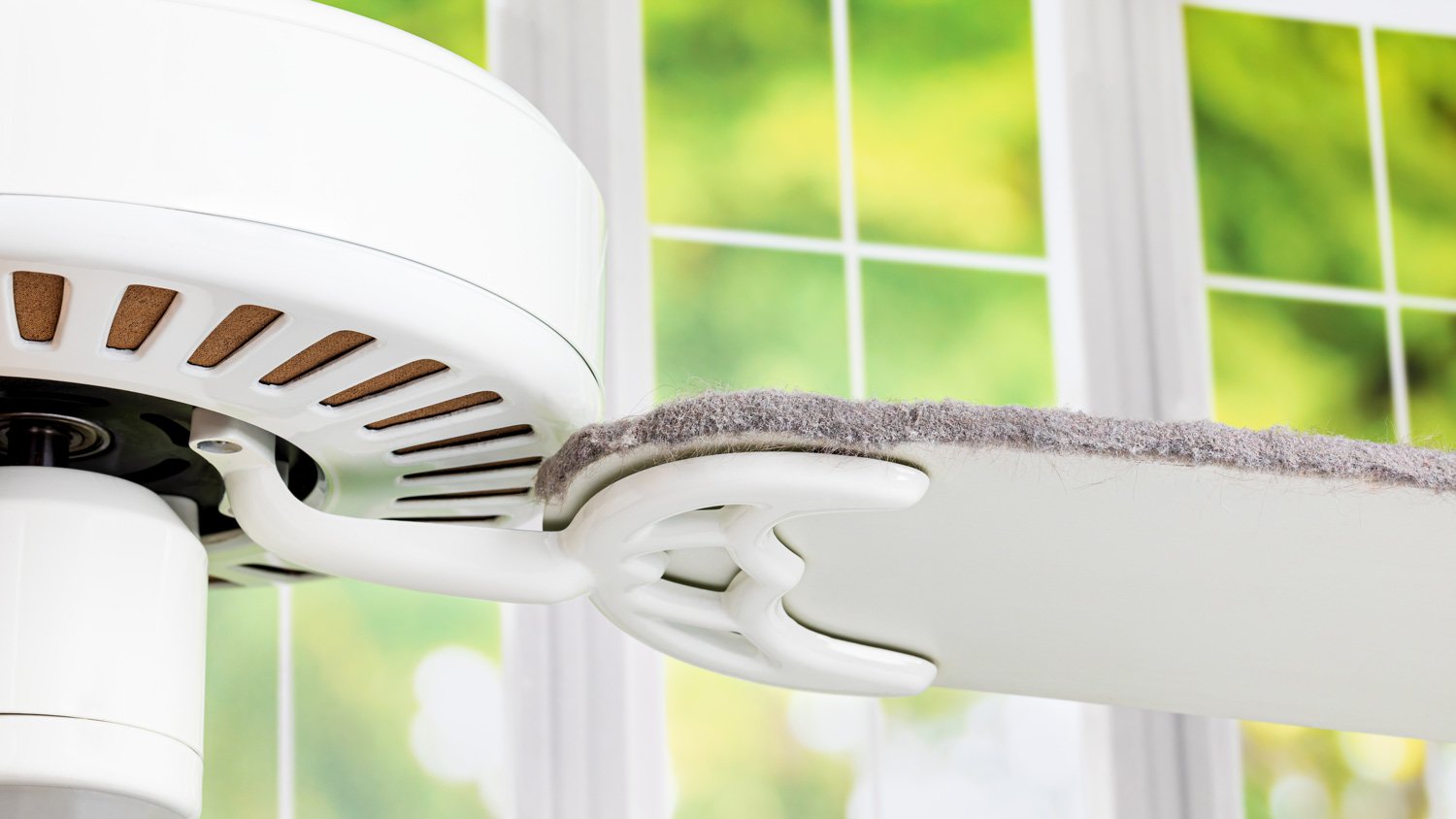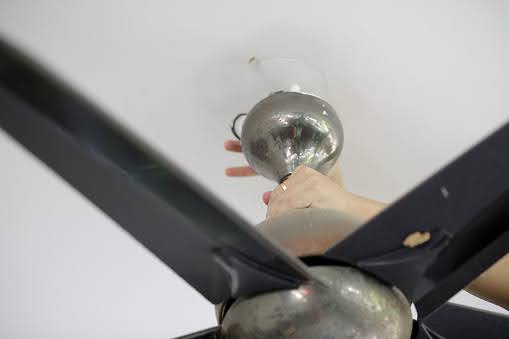Why Does My Ceiling Fan Wobble? Common Causes and Solutions
It’s not a Weeble, so stop the wobble


A wobbling fan can lead to bigger issues.
Dirt and dust buildup can warp and bend blades.
Simple DIY solutions can help restore balance.
You might love to wobble along with the popular song at weddings, but a wobbling and noisy ceiling fan is disruptive and can be a sign of bigger problems. A slight wobble is normal, especially at high speeds, but overly frequent use and poor craftsmanship can increase your fan's demise. Before you replace your ceiling fan, look at the reasons why your ceiling fan wobbles and how you might be able to fix it yourself.
1. Dust and Dirt Buildup

Let's face it—not everyone cleans their ceiling fans weekly. No judgment here, we get it. But did you know dust and dirt can collect on the fan blades causing them to bow and warp?
The particulate build-up can cause the blades to wobble and make noise. Over time, the movement can loosen the screws where the blades attach to the blade holder and where the holder is attached to the fan flywheel.
Before you take the whole fan apart, try cleaning your blades using a gentle soapy solution and a soft cloth. Wipe the blades dry and turn the fan on. If it still wobbles, move on to the next potential problem. Either way, consider adding oiling your fan to your cleaning regime or part of your regular ceiling fan maintenance.
2. Loose Screws at the Blade-Holder
If the blades are clean, but the fan still wobbles, the issue may be the blade attachments at the holder. The blade holder is the metal or plastic piece that attaches the blade to the fan flywheel and the fan motor.
Loose screws loosen further over time and lead to damaged screw holes, warped blade holders, and falling blades. When the screw holes are damaged, you can't tighten the screws anymore, and the blades will fall off the blade holder. With the fan turned off, tighten the blade holder screws into the blades.
3. Loose Blades at the Fan Holder
If loose screws weren’t the problem, the issue may be at the blade holder and the flywheel attachment site. Blades wobbling at the flywheel attachment site can warp the blade holder and damage the motor housing. If the blades come loose from the motor, they can cause injury to people and pets or even damage your house.
Tighten the screws where the blade holder attaches to the fan flywheel and center. You may need to review the manufacturer's installation instructions to find the easiest way to tighten them. Consider contacting an electrician near you if the flywheel attachment looks warped or electrical components look damaged.
4. Misaligned Blades
Misaligned blades can also cause your fan to wiggle and warble. Blade misalignment means one or more of your blades are spinning at a different height than the other. The draft from the misalignment of blades distorts the airflow and wobbles the blades. Prolonged misalignment can cause the blade screws to loosen and the blade holders to warp.
With the fan off, use a yardstick to measure the distance from the ceiling to the blade end at the highest or lowest point. Use the same point on the blade to measure the rest of the blades.
You can bend the blade down or use a weight to correct the misalignment. Repeat bending can weaken the blade holder.
5. Bent or Warped Blades
Warped or bent blades are a common problem with ceiling fans. An accidental bump, prolonged residue build-up, heavy moisture, and loose screws can all lead to warped and bent blades.
Without balancing the blades, the fan will continue to wobble, leading to loose screws, bent blades, and motor damage.
You can stabilize warped blades with a clothespin and a few coins or a blade balancing kit. Some ceiling fan types are more prone to warping than others and may continue to warp, despite repeated balancing.
6. Loose Post

A loose post can also cause your ceiling fan to wobble. With the power disconnected, stand on a ladder and gently shake the fan. If it moves, you have loose screws connecting the junction box to the ceiling.
If you leave a loose post, the wobbling will get worse. Eventually, it will come away from the ceiling, tear down electrical wiring, and cause damage to the room. Tighten the screws at the junction box to fix a loose post. Accessing and tightening the junction box screws is a two-person job.
7. Low-Quality Model
An overall issue that can increase the likelihood of your ceiling fan making noise is a low-quality model. Low-quality models use inexpensive and weak materials that bend, swell, and loosen easily. It’s worth spending a little more upfront for a longer-term investment and peace of mind.
Wipe Out Wobbles
Now that you know more about why a ceiling fan wobbles, you can find the best solution for your situation. Consider adding some of these tips to your home maintenance schedule. If your troubleshooting uncovers a larger problem, an electrician can help with more complicated jobs.
Cost to Repair a Ceiling Fan
Repairing a ceiling fan costs $90 to $200, although more complicated repairs can cost as much as $335. The most expensive repair to your ceiling fan is a motor replacement, while wall switches, pull chains, and fan blades all cost under $200 to repair.
DIY vs. Hiring a Pro
Labor is the biggest expense when repairing a ceiling fan, so fixing your own fan can be a good way to save money. Although motor replacement is more complicated, replacing a switch, pull string, or fan blade can be a simple DIY and can save you quite a bit. Parts for your fan will range from less than $10 to around $50, while professional labor costs $60 to $75 per hour.
Frequently Asked Questions
A ceiling fan is bolted to the ceiling, so it’s unlikely to fall if it wobbles unless installed improperly. In most cases, the wobble of a fan occurs because the fan is unbalanced, which can be annoying and may lead to problems down the line, but not likely dangerous.
Ceiling fans can become unbalanced due to a build-up of dirt on the blades, a damaged blade, or worn-down parts. The hardware that attaches the blades to the fan can also loosen up over time, so it’s a good idea to check for loose fasteners.
It is relatively rare for a ceiling fan to fall. A properly installed ceiling fan is attached firmly to a ceiling joist. Even if the fan is wobbling, it’s unlikely to fall down. However, you should promptly repair your fan when you notice wobbling or imbalance just to be safe.















